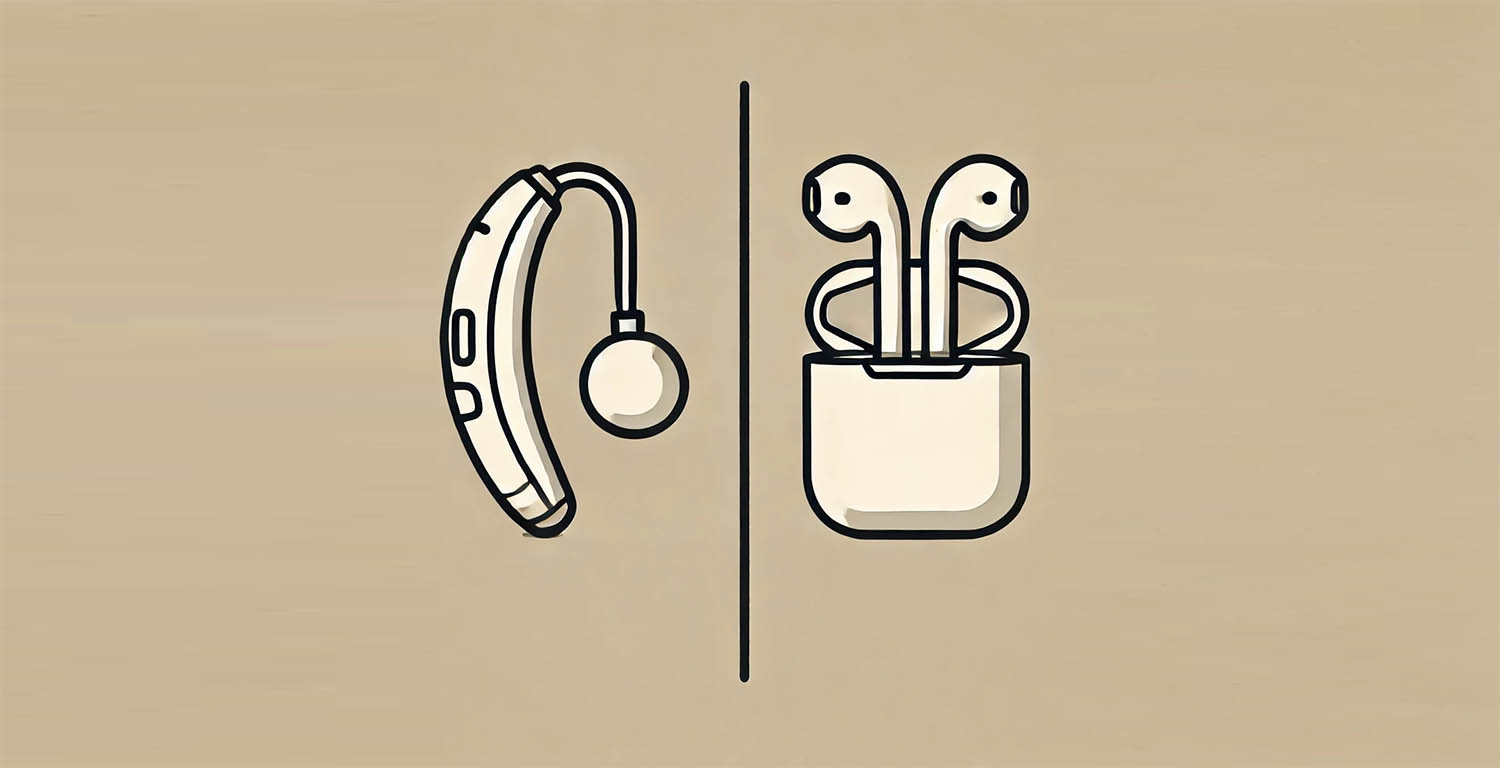How the hearing aid industry missed a massive opportunity
Apple disrupted the market with affordable, accessible tech solutions.
Design a profitable business with the Business Model Patterns card deck
Explore and refine your business strategy with proven models used by successful companies.
Get your deck!The Apple Keynote left many industries buzzing, and for good reason. One sector in particular, the hearing aid industry, is now on the verge of disruption. And it’s not because of new hearing aid technology or a breakthrough in audiology. It’s because Apple is moving in with a $249 solution: AirPods Pro 2 with FDA-approved hearing aid functionality.
Apple’s move is a game-changer for people with hearing impairments. With just a simple at-home hearing test conducted through an iOS app, users can transform their AirPods into hearing aids. No specialist visits, no $5,000 investment—just a seamless transition from a device many people already own. Beyond that, AirPods are seen as stylish and familiar, while traditional hearing aids have long carried a stigma. All at once, Apple has removed several obstacles that previously hindered hearing aid adoption.

So why did the hearing aid industry fail to see this coming? They had time. Regulatory changes enabling over-the-counter hearing aids have been in the works for a while. Yet, many hearing aid manufacturers stayed focused on the same business model, improving specs on their expensive devices and bolstering relationships with specialists who prescribe them. That approach worked for decades, but it was never built to withstand this kind of disruption.
It’s the classic story of protecting the status quo.
The hearing aid industry’s failure to act is part of a broader pattern. When businesses prioritize protecting their current model over adapting to emerging trends, they open themselves up to disruption. Rather than taking risks and innovating, they double down on what worked in the past, hoping incremental improvements will carry them forward. But history shows that this strategy often comes at a steep cost.
By the time these businesses realize what’s happening, it’s too late. They’ve been blindsided by a new competitor who isn’t weighed down by traditional thinking or existing structures. That’s exactly what’s happening to the hearing aid industry now. And it’s a story that has repeated time and time again across sectors.
What other industries are vulnerable?
The question now becomes, what other industries are standing at the same crossroads, unknowingly waiting for disruption? The answer lies in their business models. If a company is laser-focused on optimizing its current model without exploring alternatives, it’s vulnerable. Take a look at the Business Model Patterns from our deck, and you’ll notice patterns that could help any company future-proof itself against this type of disruption.
Examples of relevant Business Model Patterns are:
-
Freemium. Think about how companies like Zoom and Spotify have upended traditional industries by offering free versions of their products. By making entry accessible, they captured a massive audience, later converting them to paying customers. The hearing aid industry could have explored a similar model by offering basic hearing solutions through consumer tech while charging for advanced features or specialist support.
-
Long Tail. This model focuses on offering niche products at scale. What if the hearing aid industry had embraced this? Instead of focusing on a one-size-fits-all expensive device, they could have offered a range of affordable hearing solutions catering to different degrees of hearing loss, possibly making them accessible via mainstream platforms like iOS or Android apps.
-
No middle man. Apple’s AirPods hearing aid capability is a classic Direct-to-Consumer (D2C) move. The company bypasses the traditional healthcare infrastructure, selling directly to users through their own ecosystem. The hearing aid industry could have explored similar opportunities, selling their products directly to consumers without requiring expensive specialist visits.
-
Peer-to-Peer (P2P). Imagine a platform where people with mild hearing loss could offer insights, advice, or even rentals of hearing solutions to others. While this might sound radical for a medical device, many industries have adopted P2P models to bring down costs and improve access. The hearing aid industry could have tapped into this network of user-generated value instead of leaving the door open for tech giants like Apple.
These patterns illustrate how traditional industries can learn from other sectors to avoid disruption. It’s not about staying in your lane and improving existing offerings – it’s about exploring new models and experimenting with different approaches.
The bigger lessons
The hearing aid industry’s story highlights the importance of rethinking business models. Rather than defending the status quo, businesses need to constantly reassess their strategies and identify potential threats. Industries that are heavily reliant on specialists, intermediaries, or high margins are especially vulnerable when technology simplifies and democratizes access.
Had the hearing aid industry adapted sooner, they could have embraced new models and built solutions that were more accessible, user-friendly, and affordable. Instead, Apple stepped in. And now, the hearing aid industry is playing catch-up.
The key takeaway is that no business is immune from disruption. Companies across all industries need to examine their current models and ask tough questions. Are you focusing too much on incremental improvements? Are you relying too heavily on intermediaries? Are you underestimating the impact of changing technology?
If these questions make you uncomfortable, then it’s time to explore new business models. Whether it’s Freemium, D2C, or Long Tail, the right pattern can help you avoid the fate of the hearing aid industry. That’s why tools like the Business Model Patterns card deck exist – to help you see beyond the present and experiment with new ideas before it’s too late.
The hearing aid industry may have missed its moment, but your business doesn’t have to.
By using the Business Model Patterns in your next strategy workshop, you can explore new opportunities and ensure your business stays ahead of the curve. Instead of being reactive like the hearing aid industry, you can be proactive—positioning yourself to thrive in the face of disruption.

